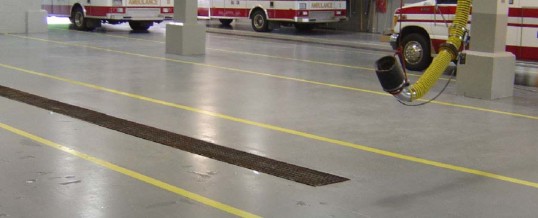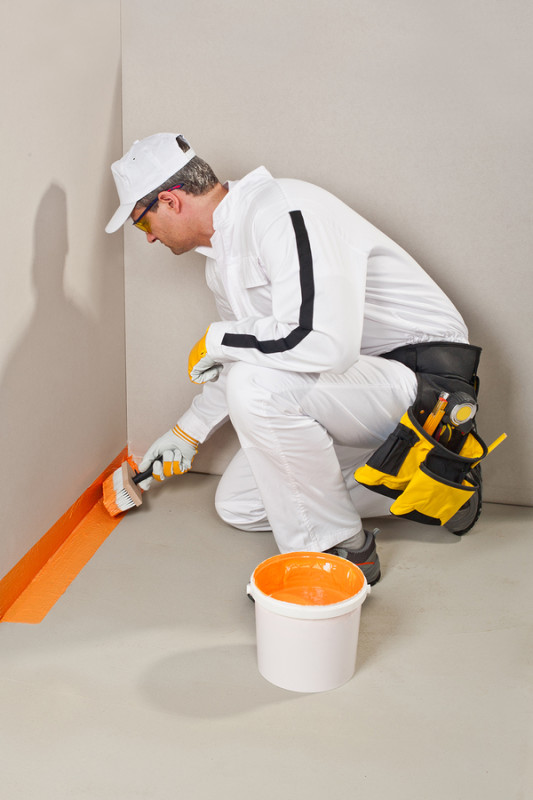
Although wood and carpet are attractive flooring solutions, they do not hold up well to heavy traffic and can easily become stained and worn. Concrete is a practical alternative in all types of business spaces. The warehouse or storage rooms may be the first location that comes to mind, but break rooms, dining areas, bathrooms, and even the entry lobby can look good in concrete.
Modern technology has provided ways to improve the aesthetic quality of concrete floors, combining form and function. However, it is still important to protect them from damage. Water damage can be devastating and lead to a number of other problems. The right concrete floor waterproofing solution is essential. Here are five from which to choose.
1. Epoxy Paint
Epoxy paint is the best of both worlds. It is a combination of both epoxy and paint. Epoxy paint can be water-based or solvent-based, and can be tinted in any color. It dries thick and solid, just as clear epoxy does. Regular paint alone is not water-resistant and in fact, can bubble and peel when water is present in the concrete. Epoxy paint is waterproof and resistant to other hazardous materials. It is a popular choice when floor waterproofing is installed to repair and cover existing damage.

2. Sealed Concrete
Concrete floors can be sealed with a number of clear coating materials. Epoxy, urethane, and even vinyl can be used to create a thick, protective layer. Before sealing, most individuals prefer to polish the concrete or color it with a stain or dye. This provides the same stability of epoxy paint, but in a different format. Concrete floor seals vary in application and drying time, as well as VOC levels, and some may be more appropriate in a small facility than others.
3. Liquid and Sheet Membranes
Membranes provide a protective layer that is waterproof, but the dried result has a rubbery texture. This material is often preferred on walls, rather than on floors, but makes an excellent base coving material in rooms where the floor may become immersed. Liquid can be sprayed or rolled on, while sheets are applied with a peel-and-stick backing.
4. Cementitious Waterproofing
Cementitious waterproofing is so named because it consists primarily of the main ingredient in concrete, cement. This material is mixed and applied with a brush or trowel. It then dries to the hardness and texture of concrete. Acrylic can be added to the mixture to create an even more solid layer. Although this option provides excellent water resistance, it can crack with movement in the same way that concrete will.
5. Bentonite
Bentonite is a clay-like material that is made from sodium bentonite. This material works somewhat differently than the other options. It absorbs water and swells to fill cracks and open spaces. As it reaches maximum expansion, it becomes a permanent fill material. Many companies choose this because it is laid in large sheets, making the installation quick. The chief advantage of this material is that it is nonhazardous and can be applied in any weather condition.
Water damage can come from a number of sources, including spills, weather, plumbing leaks, and groundwater beneath the foundation. Let ICS Coatings help you protect your building with concrete floor waterproofing. In the over 20 years in the industry, they have developed proprietary equipment to get the job done quickly and efficiently. Your floors can look good and last longer.
When you are ready to talk with a professional concrete polishing contractor about your next concrete floor project, talk to the team at ICS. We have over 20 years of experience and have installed or updated over a million square feet of concrete floors. The combination of expertise, proprietary equipment, and dedication to a job well-done make ours the service you can trust. To get started, fill out the Got a Project form with some basic information about your project.
Concrete Flooring Service Area
ICS provides concrete solutions to all of the northeast. Here is a small list of cities and towns where we have completed many industrial and commercial concrete flooring applications.
| Portland, Maine | Bangor, Maine | Augusta, Maine |
| Nashua, New Hampshire | Manchester, New Hampshire | Portsmouth, New Hampshire |
| Boston, Massachusetts | Worecester, Massachusetts | Springfield, Massachusetts |
| Burlington, Vermont | Montpelier, Vermont | St. Johnsbury, Vermont |
| Providence, Rhode Island | Warwick, Rhode Island | Cranston, Rhode Island |
| Hartford, Connecticut | New Haven, Connecticut | Stamford, Connecticut |
| New York | New Jersey | Pennsylvania |
